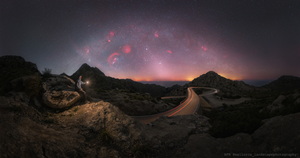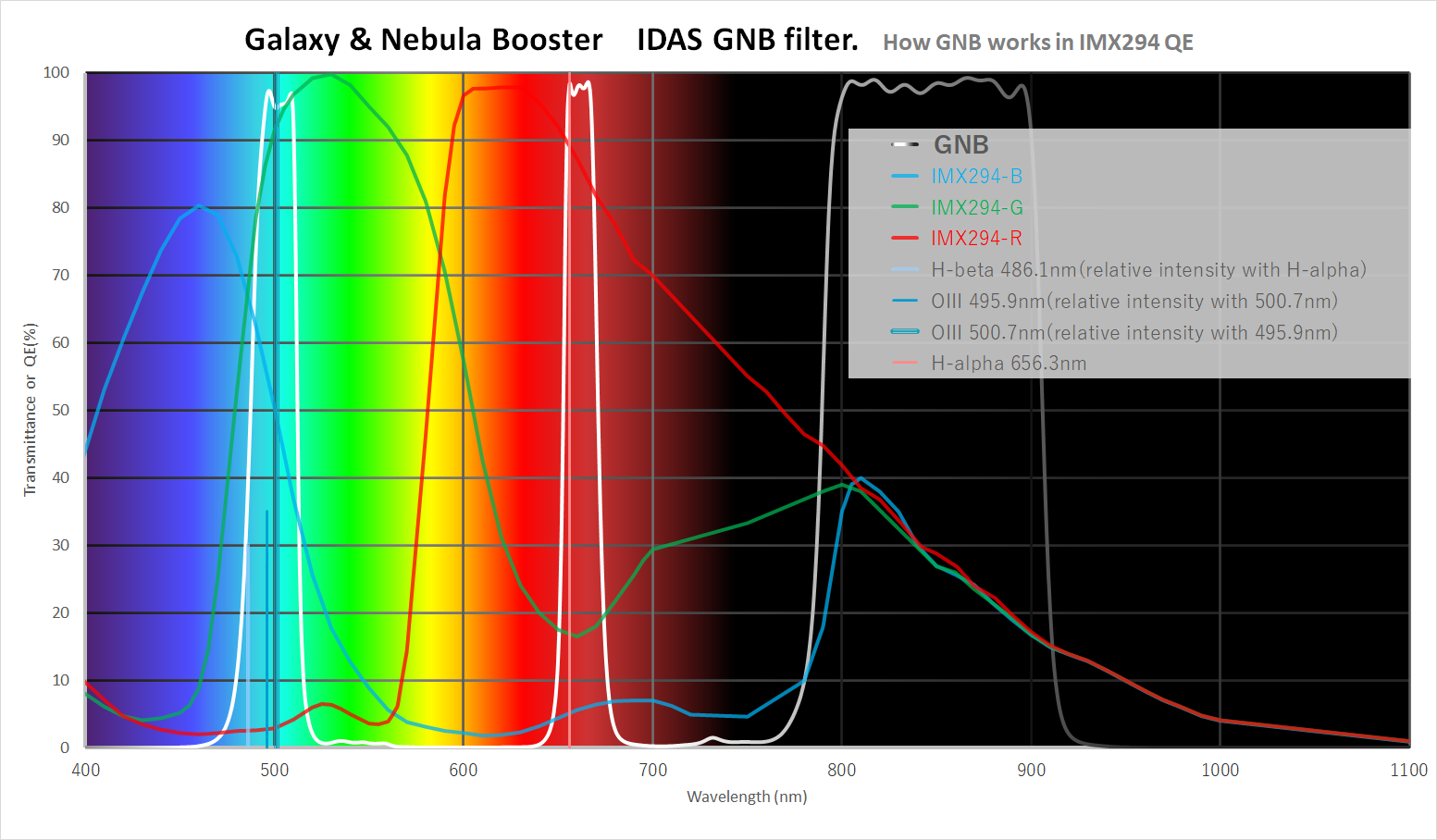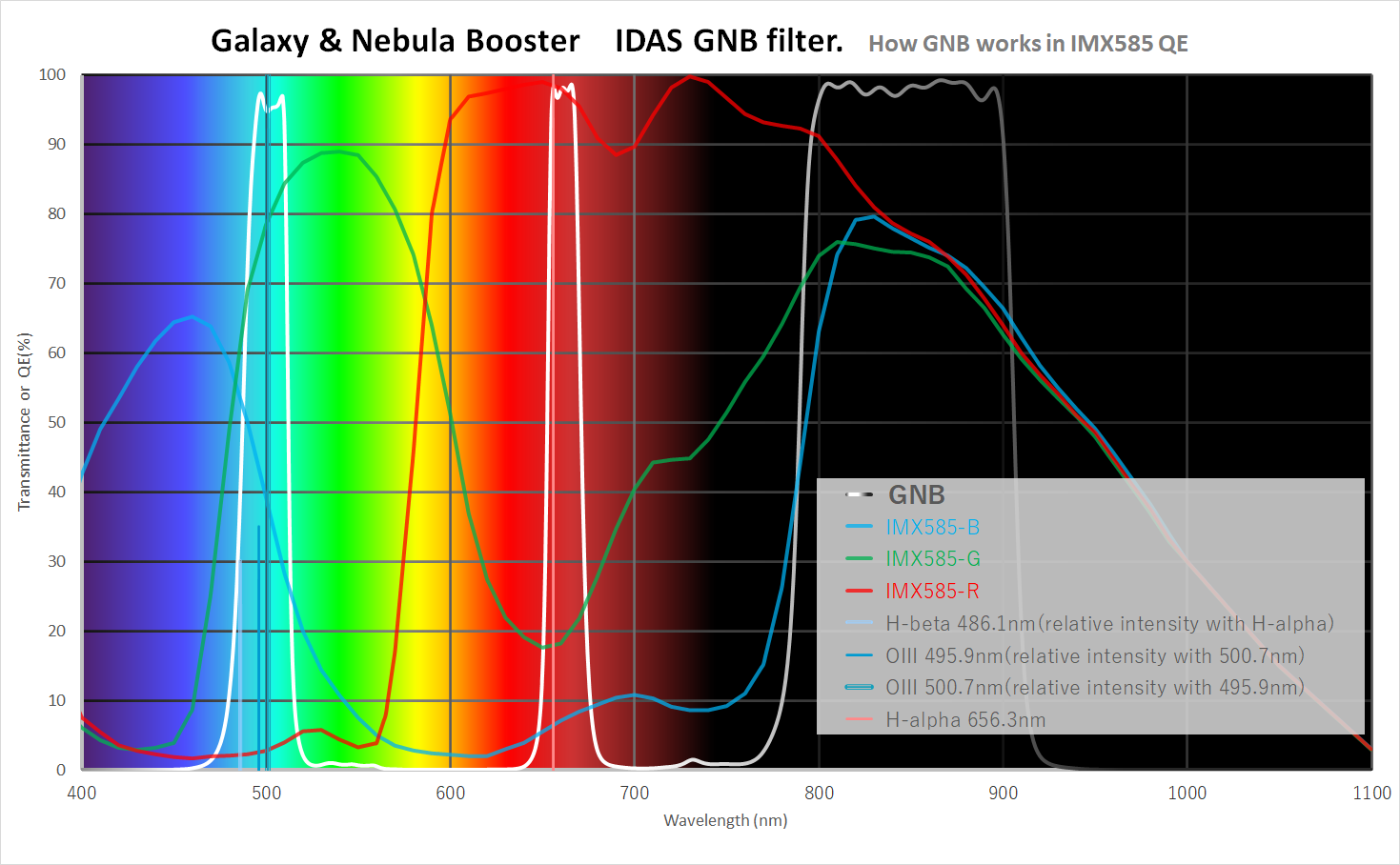Feature
The IDAS GNB filter passes through the Ha and OIII regions in the same manner as of the IDAS NBZ to suppress light pollutions in the visible light regions. Unlike any other filters available in the market, the GNB at the same time passes through the near infrared region intended for shooting galaxies that cannot be shot with any comventional nebula filters. The idea of designing this filter is based on the fact that the near infrared region can be hardly affected by artifical light pollution sources.
Notes:
We recommend the use with a NIR-enhanced sensor such as IMX585 and IMX464 especially where the GNB is used in a heavly light-polluted location.
The GNB filter will enhance the colorfulness of galaxies when used with a conventional sensor (such as IMX294).
n.b. on halos:
Optical filters such as IDAS GNB and DTD utilizing infrared tend to cause haloing in the NUV and NIR regions. This is because the anti-reflection properties of off-the-shelf cameras' optical systems (oiptical window and sensor cover glass) are optimized for the visible spectrum only, not for the NIR region. Thus, haoling at the camera end in the unoptimized region becomes more apparent, coupled with haloing from the filter itself.
Here is a rough estimation of the magnitude of haoling where the haloing maginute of NBZ (NBZex) is counted as 1:
GNB + IMX294 sensor results in 8.0 times
GNB + IMX585 sensor results in 6.3 times
Landscape Astrophotography:
These days more and more people make use of IDAS DRE/DRT filters for landscape astrophotography. Here are the links to valuable reference sources to learn about landscape astrophoto graphy - provided by courtesies of Mr. Bernat Font.
- https://bernatfont.wixsite.com/mallorca-landscape/post/sistema-de-filtros-drop-in-filtros-idas
- https://www.sonyalphaforum.com/topic/21934-drop-in-filters-idas-filters-for-widefield-astrophoto/#comment-70164
- https://www.dpreview.com/forums/post/68239480
 <- you can click to enlarge <- you can click to enlarge
a photo sample shot with GNB DRE
Graphs of GNB Characteristics and QE Characteristics of a Conventional Sensor:


Tips on how to sharpen the HII region of GNB filtered images - excerpted from Mr. Uto's blog:
Click on the following to read the full posting:
"Now, the GNB filter is a filter with interesting properties. I believe that GNB is mainly tailored for e-observation of color cameras with high NIR sensitivity, and yet it seems to be recommended for use with color cameras of which window glass transmits up to NIR. However, when using GNB with such a one-shot color camera, NIR lights can possibly desaturate colors in the HII and OIII regions of galaxies."
M33 Shot with GNB + IMX294

Graphs of GNB Characteristics and QE Characteristics of IMX585:


Shots with GNB + IMX585
705C-GNB2mx61C.png)
705c-GNB-30sx100.png)
585GBN-2mx150.png)
Graph of GNB Characteristics and QE Characteristics of IMX464:

|












705C-GNB2mx61C.png)
705c-GNB-30sx100.png)
585GBN-2mx150.png)
